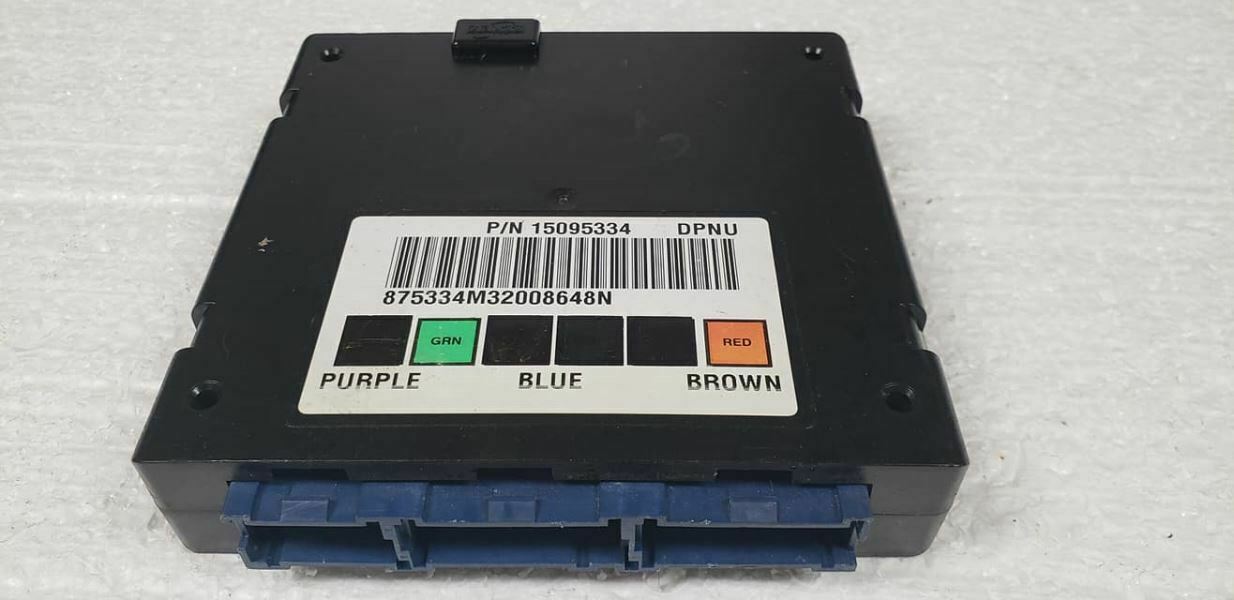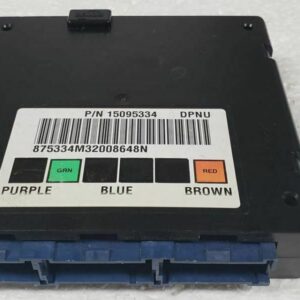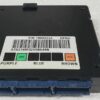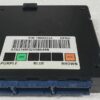End the Electrical Gremlins in Your GM Truck
If you’re dealing with bizarre electrical issues in your 2002 Silverado or other compatible GM vehicle, you’re not alone. As a technician with over two decades of experience, I’ve seen firsthand how a failing Body Control Module (BCM) can turn a reliable truck into a source of constant frustration. It’s the central command for your vehicle’s body electronics, and when it starts to go, it can manifest in some truly strange ways. This isn’t just an inconvenience; erratic lights or a faulty security system can be a real safety concern.
We solve this problem by providing a replacement BCM that is professionally programmed to your vehicle’s specific Vehicle Identification Number (VIN). This means we load the latest, most stable software from GM directly onto the module before it ever leaves our facility. You get a part that is ready to install, eliminating the need for an expensive trip to the dealership for programming. This is the direct, reliable fix you’ve been looking for to restore your truck’s proper function.
A Technician’s Notebook: The Case of the Spooky Sierra
I remember a 2002 GMC Sierra 1500 that came into the shop with a list of complaints the owner called ‘spooky.’ The dome light would flicker while driving, the radio would randomly shut off, and the power door locks had a mind of their own. He’d already replaced the battery and checked the main grounds. Diagnostics showed no clear trouble codes, just a lot of intermittent communication errors. This is a classic BCM failure signature. The internal processors and solder joints break down over time, causing these ghost-like issues. We installed a VIN-programmed BCM, and in under an hour, every single ‘spooky’ problem was gone. The truck was back to being a dependable workhorse.
Common Signs of a Failing BCM
A faulty Body Control Module can be tricky to diagnose because its symptoms often overlap with other issues. However, if your vehicle is showing several of these signs, the BCM is a very likely culprit. In my shop, these are the most common complaints that lead back to a bad 2002 Silverado BCM.
- ✔ Power windows, mirrors, or door locks working intermittently or not at all.
- ✔ The security or anti-theft light staying on, preventing the engine from starting.
- ✔ Interior or exterior lights flickering, staying on, or not turning on.
- ✔ Gauges on the instrument cluster behaving erratically or not working.
- ✔ The horn honking unexpectedly or not working when pressed.
- ✔ Diagnostic trouble codes related to communication loss with other modules (U-codes).
Your Straightforward BCM Installation Guide
Installing your new BCM is a manageable job for a confident DIYer. The key is taking your time and ensuring the connections are secure. For most trucks and SUVs on the fitment list, the BCM is located under the driver’s side of the dashboard.
- Safety First: Always disconnect the negative terminal from your vehicle’s battery and wait a few minutes to ensure all systems are powered down.
- Locate the Module: On models like the Silverado, Sierra, and Tahoe, the BCM is typically mounted to a bracket or support brace under the steering column. On vans like the Astro and Safari, it’s often behind the center dash panel.
- Disconnect and Remove: Carefully unplug the electrical connectors. They have locking tabs that need to be depressed. Once disconnected, unbolt or unclip the old BCM from its mounting location.
- Install the New BCM: Mount your new, pre-programmed BCM in the exact same position as the old one. Securely plug in all the electrical connectors, making sure they click into place.
- Power Up: Reconnect the negative battery terminal. Turn the key to the ‘On’ position (without starting the engine) and test your electronics—windows, locks, lights, etc.
- Final Checks: Be aware that some vehicles may require a simple relearn procedure after installation. If your airbag light is on, a professional scan tool is needed to perform the ‘Setup SDM Primary Key in BCM’ function. Some models may also benefit from a Brake Pedal Position relearn for optimal performance.
Verified Vehicle Compatibility
This BCM is a direct replacement for a wide range of General Motors trucks, vans, and SUVs. We program it specifically for your vehicle, ensuring seamless integration. Please verify that your vehicle and original part number are listed below. This module is compatible with service numbers 15063578, 15081796, 15095334, 19208537, DKAK, and DPNU.
AVALANCHE 1500 02 (4×2)
BLAZER S10 02-05
SILVERADO 1500 / 2500 / 3500 PICKUP 02
S10 PICKUP 02-04
SUBURBAN 1500 / 2500 02 (4×2 for 1500)
TAHOE 02 (4×2)
ASTRO VAN 02-05
GMC Models:
JIMMY S15 02-05
SAFARI VAN 02-05
SIERRA 1500 / 2500 / 3500 PICKUP 02
SIERRA DENALI 02
SONOMA S15 PICKUP 02-04
YUKON / YUKON XL 1500 02 (4×2)
YUKON / YUKON XL 2500 02
Cadillac Models:
ESCALADE 02 (4×2)
Why is a VIN-programmed BCM better?
Programming the BCM to your specific VIN ensures that all the electronic features your vehicle was built with will work correctly. It prevents compatibility conflicts and saves you from needing specialized, expensive tools or a trip to the dealership for programming after installation.
How do I provide my VIN?
After you complete your purchase, simply send us a message with your 17-digit Vehicle Identification Number (VIN). We cannot program and ship your BCM without it, so please provide it promptly to avoid delays.
Do I need to return my old BCM?
No. This purchase has no core charge. You can keep your original module, which can be helpful if you ever want to revert the vehicle to its original state.
What tools are needed for the post-installation procedures?
Most vehicles will not require any further steps. However, if the airbag light comes on, the ‘Setup SDM Primary Key’ procedure must be done with a professional-grade diagnostic scan tool (like a Tech 2 or equivalent). The Brake Pedal Position relearn can sometimes also require a scan tool, depending on the model.
Where is the BCM located on my 2002 Silverado?
On the 2002 Silverado and other GMT800 trucks (Sierra, Tahoe, Yukon), the Body Control Module is located under the driver’s side dashboard, usually attached to a plastic support structure to the left of the steering column.



